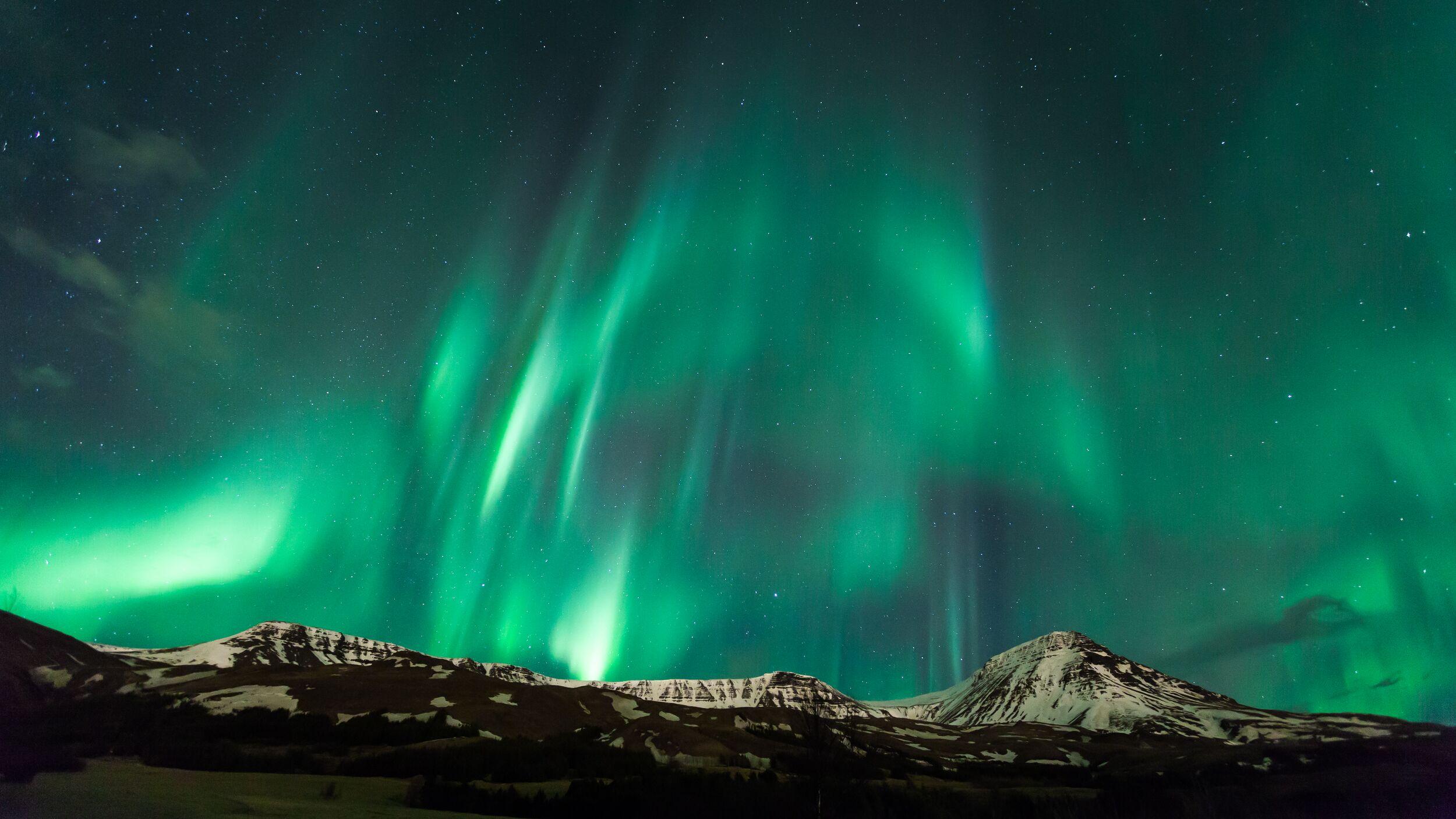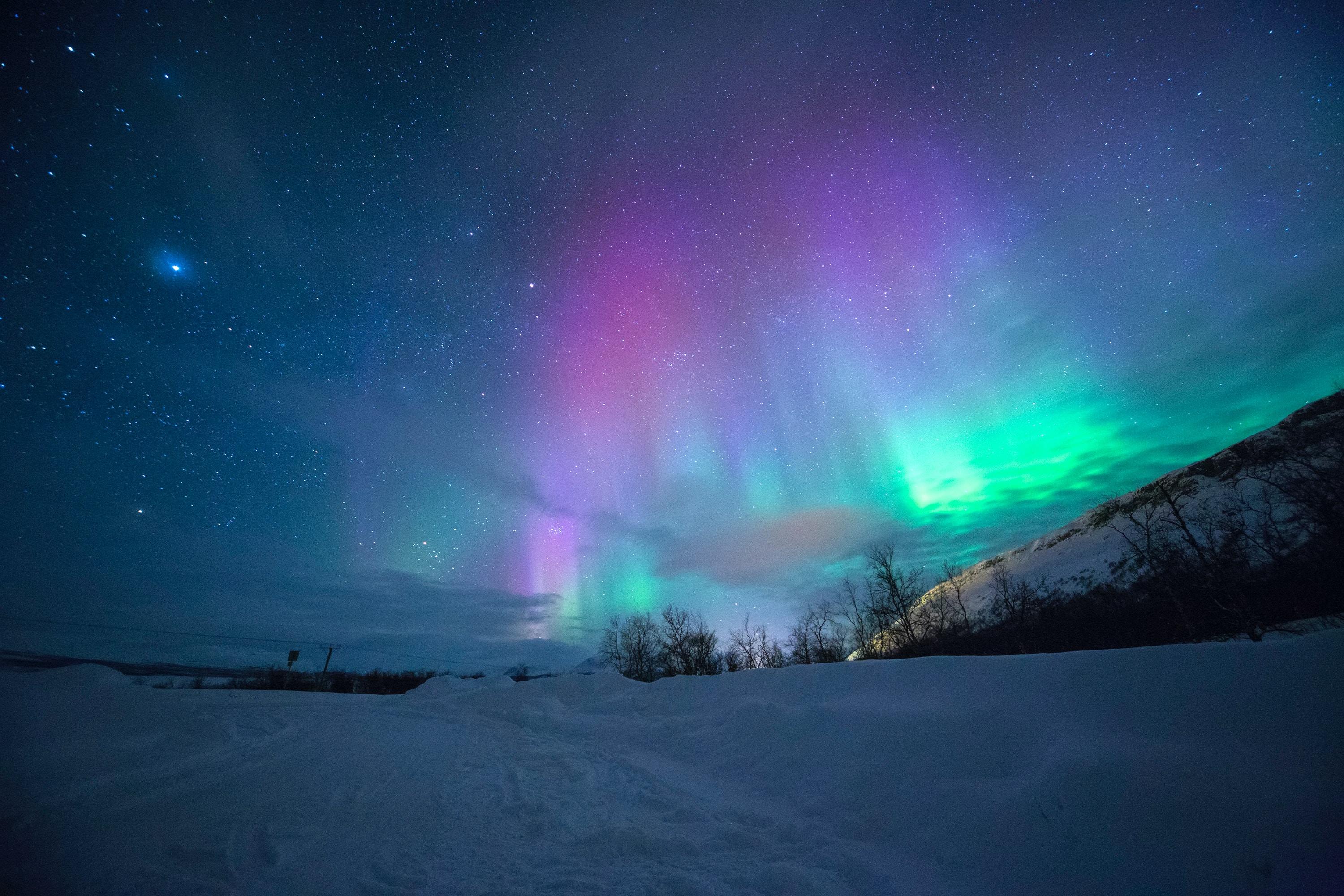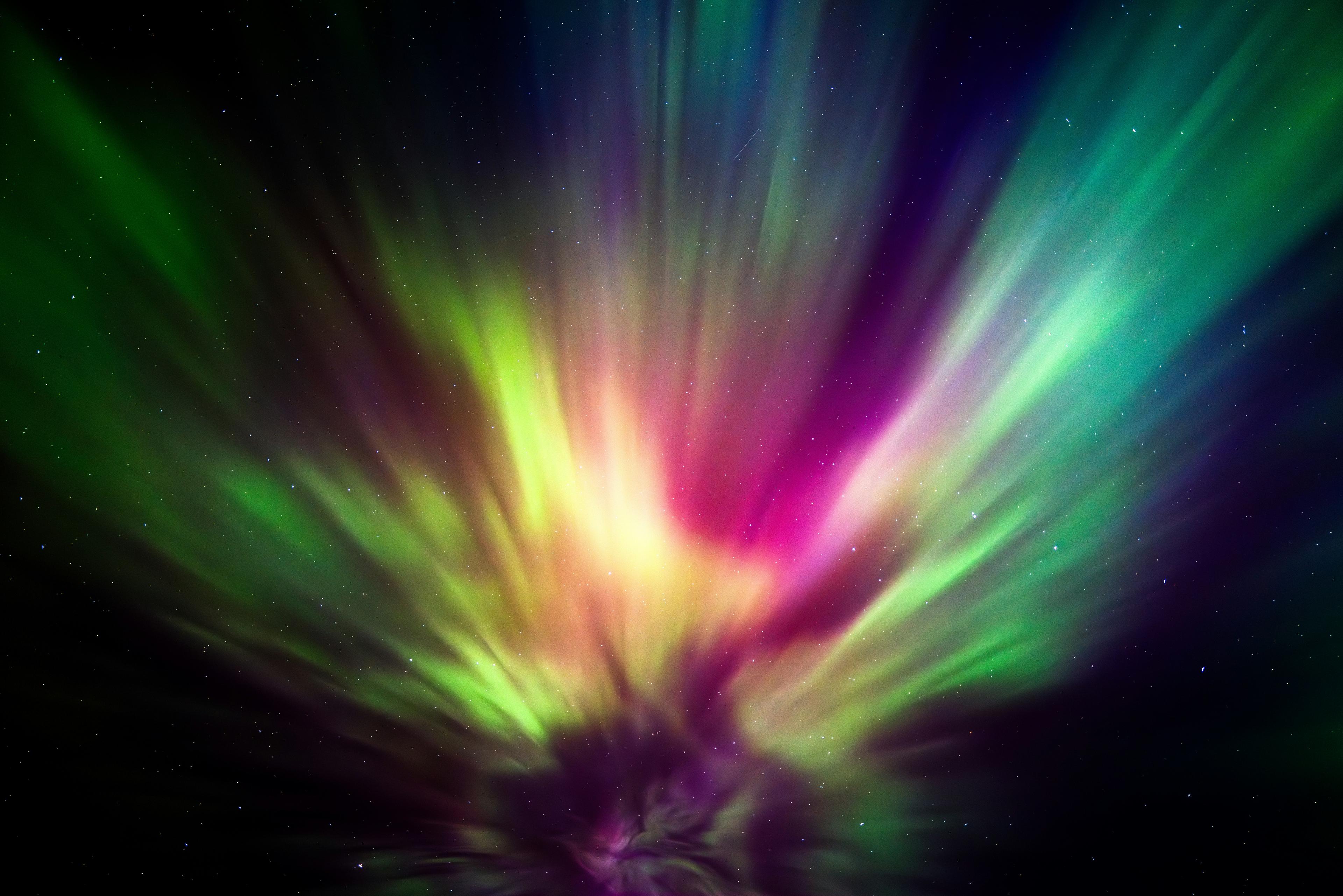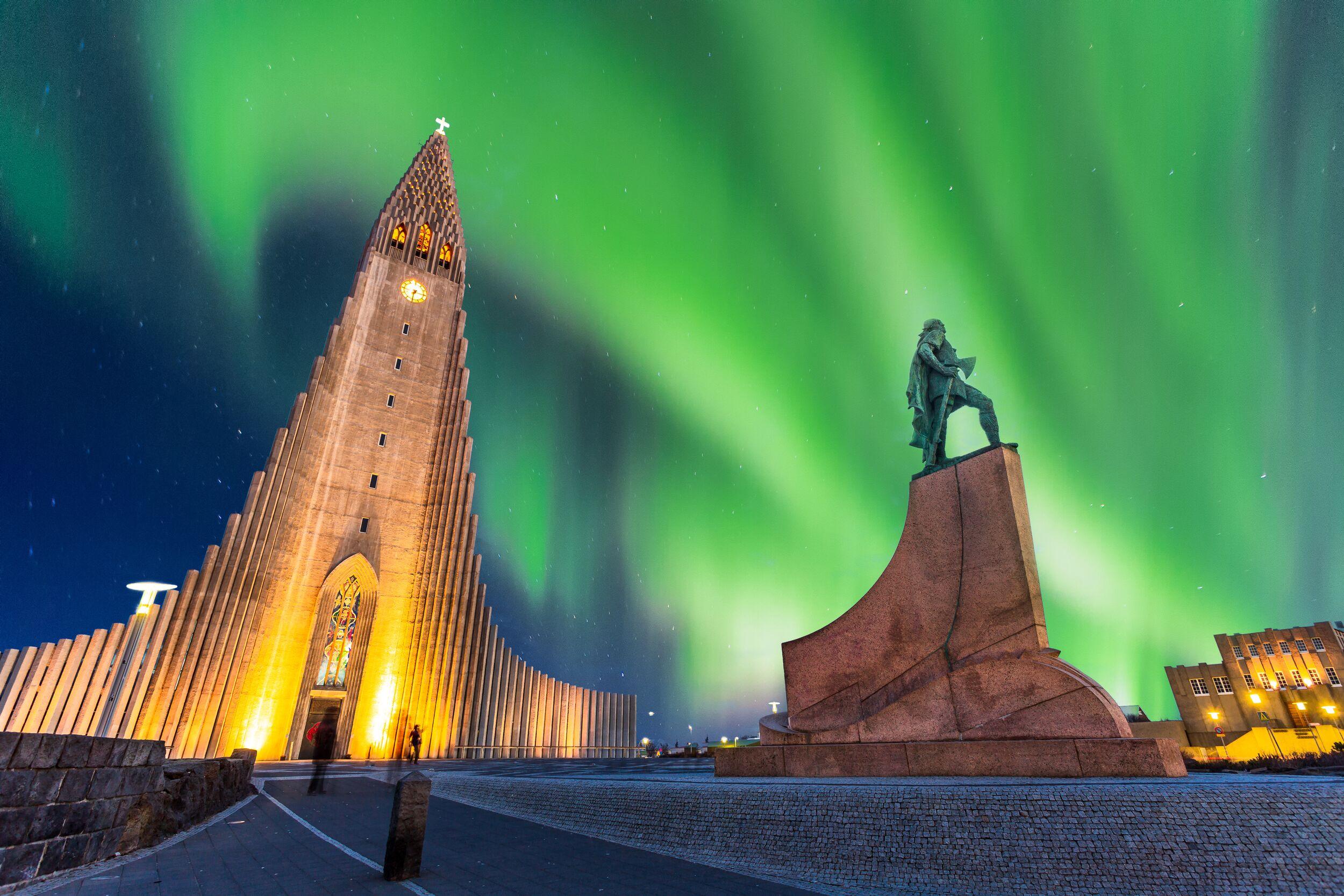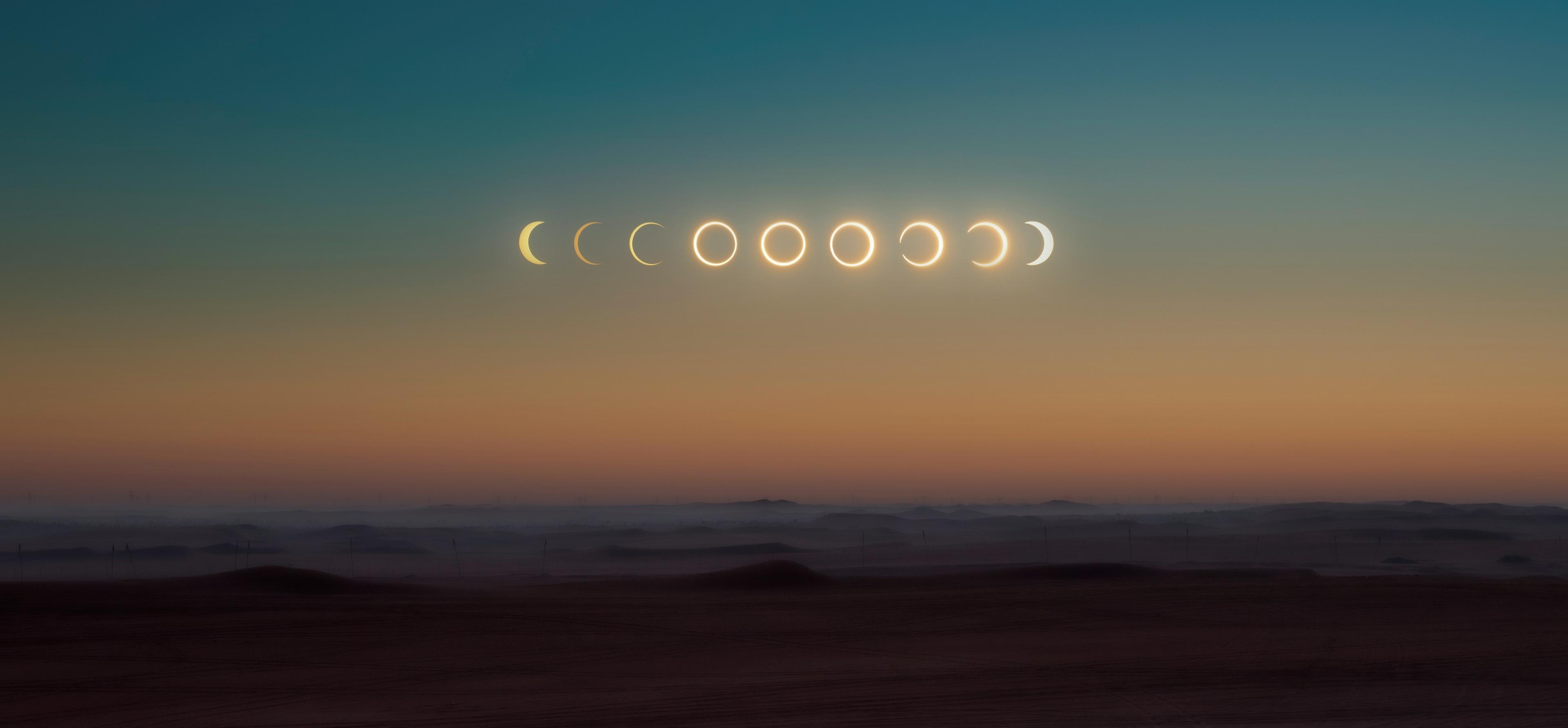How to Photograph the Northern Lights - Tips from Iceland's Science Celebrity Star Sævar
We’re in the midst of the best Northern Lights season we’ve seen—and will see—for at least a decade. The current solar maximum is supercharging the skies, making this the perfect time to catch the auroras in all their glory. Now’s the moment to experience some of the brightest and most frequent displays of the Northern Lights in the last 20 years, and it’s only going to get better!
Who better to help us navigate this incredible Northern Lights season than Iceland’s very own science star, Sævar? In this article, we’ll introduce you Star Sævar who will share some expert tips on how to photograph the Northern Lights like a pro, whether you’re armed with a smartphone or a DSLR.
Never miss a celestial event!
Subscribe now for exclusive tips and offers!
Star Sævar: Iceland’s Stargazing Superstar
When it comes to the magic of Iceland’s night skies, there’s no better guide than Star Sævar—the man we Icelanders trust to decode the mysteries of the universe for us. Sævar Helgi Bragason, better known as Stjörnu Sævar (or "Star Sævar" in English), is basically Iceland's cosmic celebrity. He’s practically our celestial weather report—if he’s excited, we know something big is happening!
Sævar’s love affair with the stars started long before he became our go-to science guy. Growing up in the suburbs, he was that kid who’d be late to school because he couldn’t stop looking up at the sky. His true “aha” moment came when he peeked through a telescope for the first time and saw Saturn’s rings. That moment sparked something in him, and ever since, he’s been on a mission to share the universe with the rest of us.
While most of us might just enjoy the Northern Lights as a nice Instagram shot, Sævar digs deep. He’s the one who breaks down why and how these displays happen, in a way that makes you feel like you’re part of something much bigger. And he does it in a way that’s so down-to-earth that you don’t need a science degree to understand.
What’s even more impressive? He didn’t follow the typical academic path to get here. With no astronomy program available at the university, he pursued a degree in geology instead. And while he didn’t formally study it at university, that didn’t stop him. His insatiable curiosity and knack for breaking down big cosmic questions have made him Iceland’s star (literally) of science.
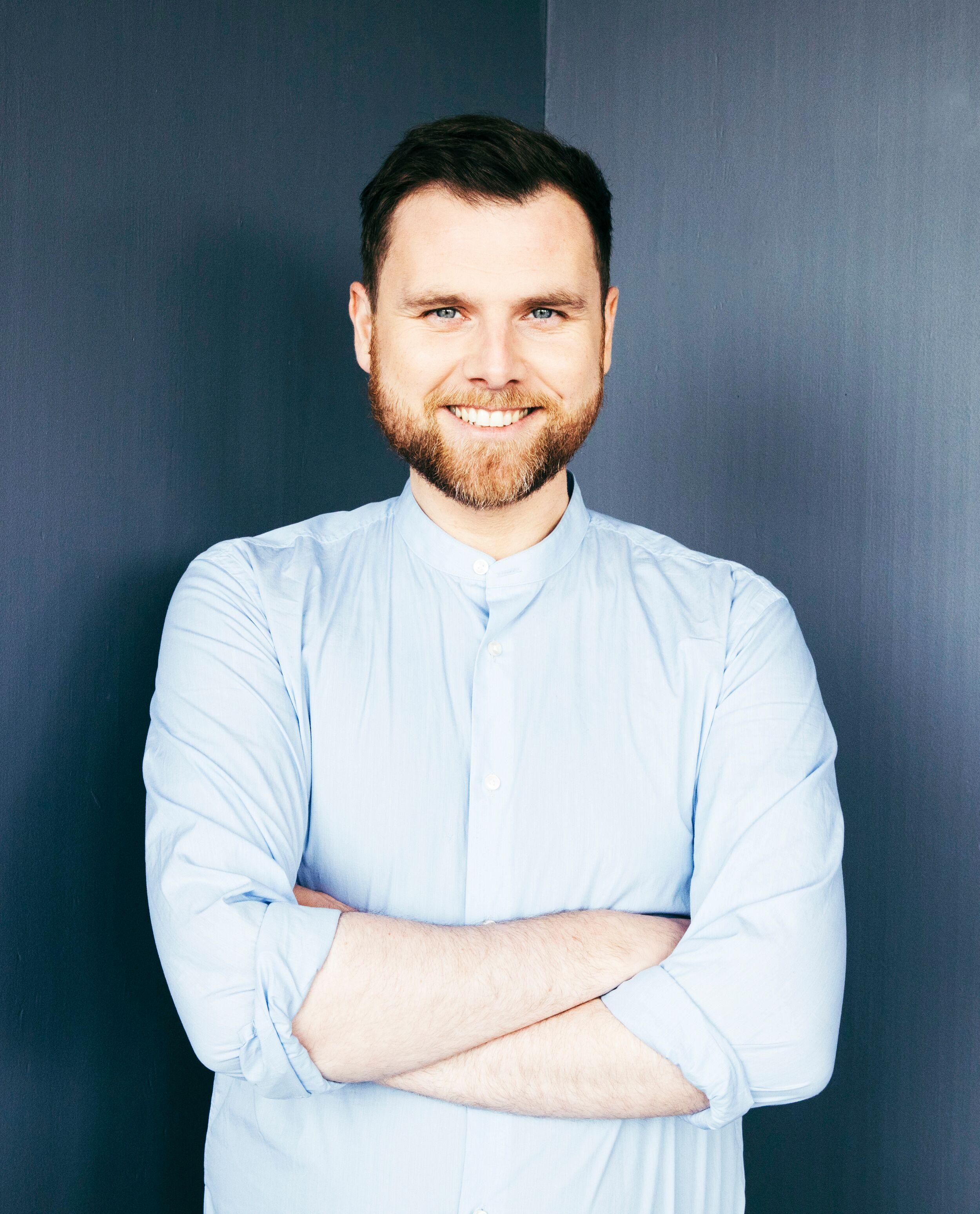
He is *the* guy we all turn to when something extraordinary is happening in the sky.
Sævar didn’t start his career with a plan to be in the media. In fact, his entry into television and public science communication happened almost by accident, as he shared in an interview with Iceland Monitor. As a teenager, he was invited for a TV interview to talk about a celestial event, and his clear, engaging way of explaining complex astronomical topics made an instant impression.
Since then, Sævar has dedicated himself to making science fun and accessible for everyone. He’s written books, hosted popular TV shows, and given countless talks to inspire people of all ages to look up and appreciate the wonders of the universe.
This October, Sævar’s taking his passion for the sky on the road as he represents Icelandia at the Taste of Iceland event in Seattle. It’s a traveling cultural festival about Iceland that regularly brings everything we hold dear—delicious Icelandic food and drink, music, comedy, design, wellness, and, of course, our stunning nature—to cities around the world.
And who better than Star Sævar to share the magic of our Northern Lights with the world?
Sævar makes science easy and fun, so everyone—kids and adults—can enjoy it - this has made him a popular figure!
Why NOW is the Best Time to See the Northern Lights in Iceland
And right now, there’s no better time to have someone like Star Sævar guiding us through the skies. As we mentioned in our previous article, we’re in the middle of a solar maximum, part of the 11-year solar cycle where the sun’s activity ramps up, creating the perfect conditions for incredible Northern Lights displays.
The solar cycle has two phases—solar minimum and solar maximum. During the solar minimum, the sun is relatively quiet, and auroras are fewer and dimmer. But during the solar maximum, like the one we’re in now, solar activity peaks, resulting in more frequent and vibrant auroras lighting up the skies. These cycles occur roughly every 11 years, meaning we’re currently in one of the best opportunities to see the Northern Lights at their most intense and colorful.
There’s really no better place to catch this cosmic light show than right here in Iceland. We’re sit in the middle of the aurora zone, giving us some of the best Northern Lights conditions on the planet. And unlike other countries this far north, we get to enjoy relatively mild winters (thanks, Gulf Stream!), which means you can go aurora hunting without freezing your toes off.
Plus, you don’t even have to drive far from Reykjavík—just a short drive will take you to spots with barely any light pollution. Northern Lights tours of all types are running daily from Reykjavík, offering everything from guided bus tours to more intimate jeep and boat tours, so you can sit back, relax, and let the experts take you to the best viewing spots.
So, if seeing the Northern Lights is on your bucket list, this solar maximum, combined with Iceland’s perfect location, makes it the ultimate time and place to experience one of nature’s most stunning shows!
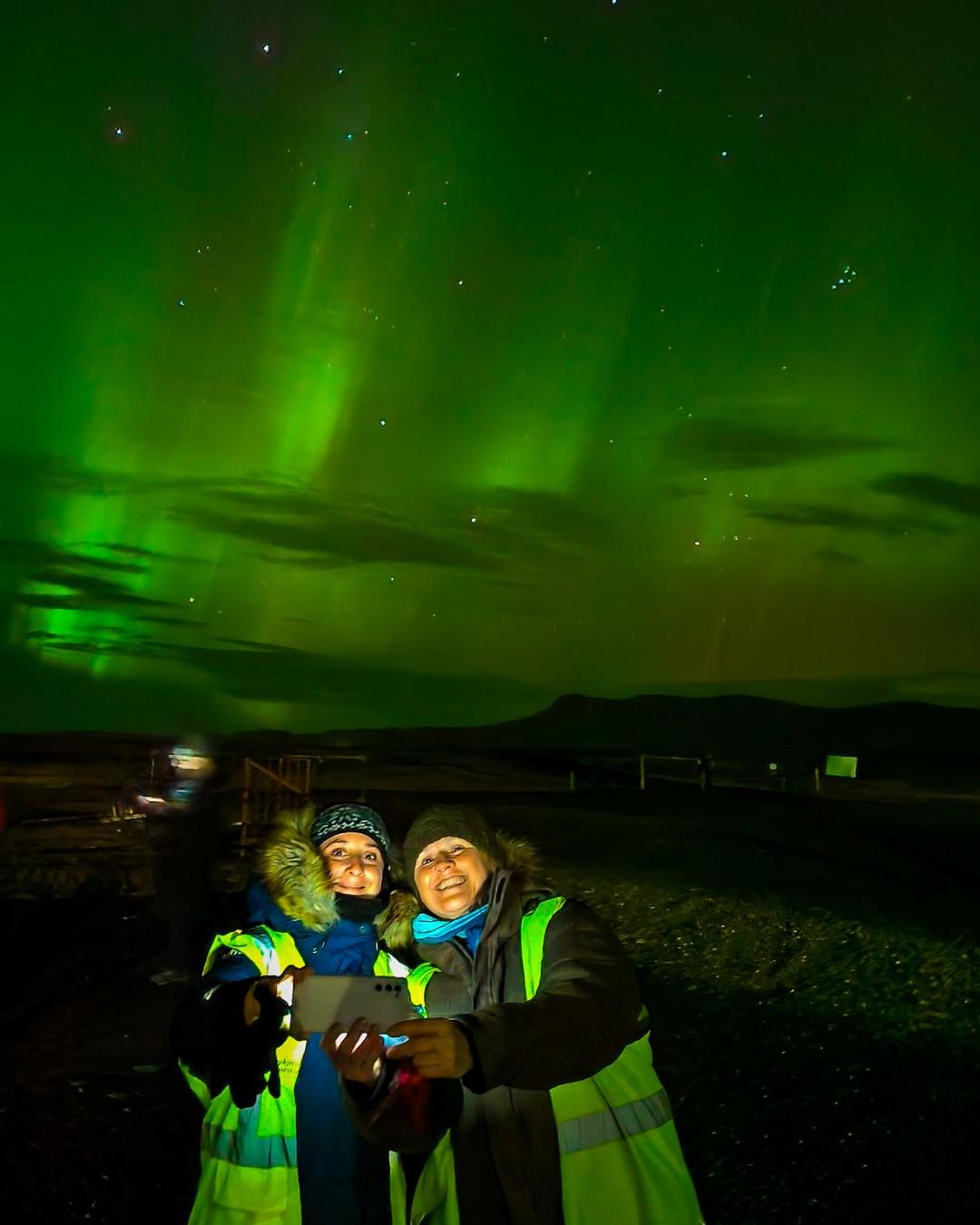
Incredible Northern Lights season ahead!
This season in Iceland has already kicked off with jaw-dropping aurora displays in September.
Star Sævar’s Tips for Capturing the Northern Lights
Now that the Northern Lights season is in full swing, you’ll want to capture those magical displays to relive the experience. Lucky for us, Star Sævar has some top-notch tips to help us photograph the auroras like a pro—whether you’re using a smartphone or a DSLR camera.
First of all, iit's important to note that Northern Lights are best enjoyed with the naked-eye, no special equipment needed! However, most people lucky enough to witness a stunning and colourful Northern Lights display also want to take their own photos of them. Who can blame them?
Shooting the Northern Lights is quite easy, whether using your smartphone, DSLR or mirrorless cameras. The best camera settings depend on how strong the aurora display is and the quality of your cameras and lenses.
For Smartphone Users
Believe it or not, you don’t need fancy equipment to capture the Northern Lights. Here’s how to make the most of your phone’s camera:
- Set to night mode for longer exposures: Most modern smartphones have a night mode, which automatically adjusts the exposure time to capture more light. This feature is perfect for photographing the aurora.
- Use a tripod: Keeping your phone steady is crucial for those longer exposures. A tripod will prevent blurry shots and keep your images sharp.
- Find a visually interesting foreground: The Northern Lights look even more stunning when paired with a beautiful landscape—whether it's mountains, glaciers, a still lake or lagoon, or even a simple silhouette of trees. A reflective surface like water can create a mesmerizing mirror effect that elevates your shot.
For DSLR/Mirrorless Camera Users
If you’re working with a DSLR or mirrorless camera, you’ve got more control over your settings and can really push the quality of your photos. Sævar’s advice:
- Use manual settings: Set your camera to manual mode so you can control every aspect of the shot. Shoot in RAW format to capture as much detail as possible for post-processing.
- Use wide-angle lenses: A short focal length (around 12mm, 14mm, or 24mm) allows you to capture more of the sky, giving your image a sense of scale and grandeur.
- Set aperture, ISO, and exposure manually: Open up your lens to the widest possible aperture (f/1.4 to f/2.8) to let in more light. Set your ISO between 800 and 3200, depending on the brightness of the auroras. Exposure times can range from 1 to 25 seconds—shorter exposures for brighter lights and longer for faint displays.
- Adjust based on brightness and movement: If the auroras are bright and moving quickly, use shorter exposures (under 10 seconds) to freeze the motion and avoid blurring. For slower, fainter auroras, longer exposures will capture more detail.
Bonus Tips for Capturing the Northern Lights and the Milky Way
- If you’re lucky enough to have a clear, dark night, you might even catch the Milky Way alongside the auroras. For this, bump up your ISO and extend your exposure times—sometimes up to 30 seconds—to capture both the Northern Lights and the stars. Just be mindful of the balance: too long of an exposure could wash out the colors of the auroras.
Enjoy the Moment While it Lasts
And don’t forget—while it’s exciting to snap photos, Sævar always reminds us to pause and take it in with our own eyes. If you are seeing auroras for the first time, look up and enjoy the show!
Not only does the screen distract you from the beauty of the moment, but it can also ruin your night vision. After looking at a bright screen, it can take several minutes for your eyes to adjust back to the darkness, reducing your ability to fully appreciate the subtle, magical colors of the aurora.
So, put the phone down, let your eyes soak in the natural wonder, and savor every second of this awe-inspiring phenomenon while it lasts!
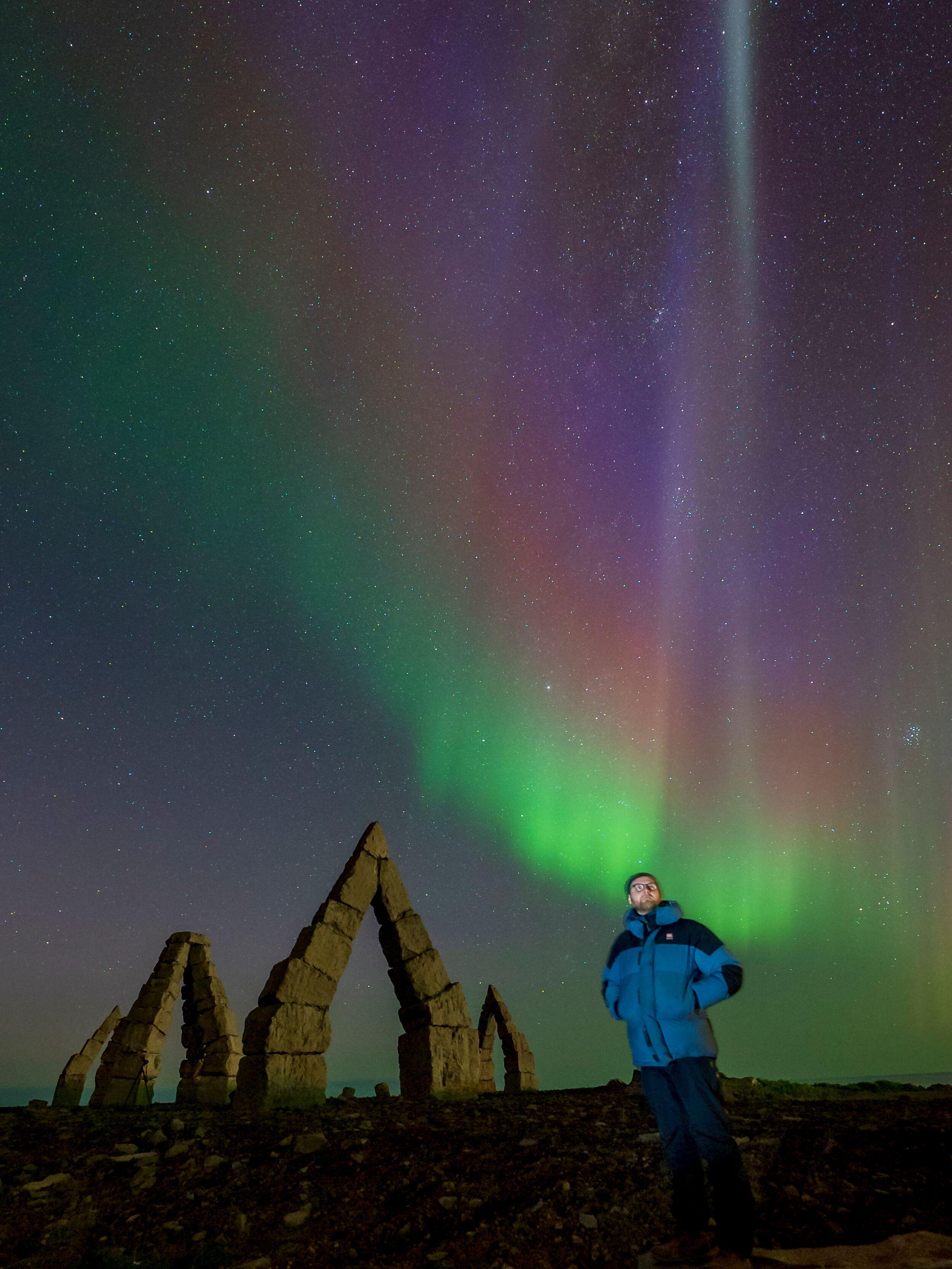
Sævar's photo og himself under the Northern Lights at the Arctic Henge in North Iceland.
All You Need to Know about the Northern Lights
The Northern Lights are one of nature’s most magical shows, blending beautiful colors with fascinating science. If you’re curious to learn more, we’ve got you covered!
Check out our articles on the science behind the auroras, the cool folklore and myths that surround them, and even tips for the upcoming solar peak in the winter of 2024/2025. Plus, don't miss our handy guide to maximize your chances of seeing this celestial light show. Whether you're here for the science or just the beauty, there's plenty more to explore and enjoy!
Questions and Answers
Almost any camera phone these days is powerful enough to take decent pictures of the Northern Lights. In fact, many phone cameras are actually better than proper cameras!
To take a good photo, turn your exposure to the maximum, turn off the flash, and use night mode. Apps such as Nightcap, Cortex Camera, or the Northern Lights Photo Taker can help too.
The rarest colours of the Northern Lights are blue and red. Blue auroras are produced by nitrogen molecules at lower altitudes and are less common. Red auroras, occurring at the highest altitudes and caused by high-altitude oxygen, are also relatively rare. Both these colours require specific atmospheric conditions to be visible, making them a less frequent but spectacular sight in auroral displays.
The Northern Lights can be seen from Reykjavík, yes. And it’s a magical experience to see them by chance when you’re just enjoying your evening.
However, the city is not the best place to see the Northern Lights. That’s because light pollution can prevent them from appearing with their full strength. Instead, you want somewhere dark to enjoy them at their best.
The Northern Lights are special for a couple of key reasons:
1. Unique Natural Phenomenon: They represent a spectacular natural light display in the Earth's sky, primarily seen in high-latitude regions around the Arctic and Antarctic. This phenomenon results from the interaction between the Earth's magnetic field and charged particles from the sun, making it a unique celestial event.
2. Cultural and Mythological Significance: Throughout history, the Northern Lights have held significant cultural and mythological importance in various societies. They have inspired numerous folklore tales and art and have been a subject of awe and wonder. Their ethereal beauty and the magical experience they provide add to their special status in human perception and experience.
It’s possible to see the Northern Lights in Iceland throughout the winter.
For the Northern Lights to be visible, you need two things: solar activity and a clear, dark sky. The darker the better—that’s why winters in very northern countries like Iceland are the best time to see them.
The darkest months of the year are November, December, and January. However, you can see Northern Lights from the middle of August through to April and studies show that the closer you are to the equinoxes, the higher the likelihood of seeing the Northern Lights. Based on that you'd want to place your bet on September/October and March/April.
The scientific processes that cause the Northern Lights occur very often, if not pretty much all the time—throughout the night, day, winter and summer. However, often you can’t see them because of the cloud, the midnight sun, or because you’re not looking.
While every night might be an exaggeration, the Northern Lights are much more common than you might think!
Auroras can last from a few minutes to several hours, depending on the intensity of the geomagnetic storm causing them.
To maximize your chances of seeing the Northern Lights, it's advisable to stay for at least a week. This duration allows for variability in weather conditions and solar activity, which are crucial factors in the visibility of the auroras. Since the Northern Lights are a natural phenomenon and their appearance can be unpredictable, a longer stay increases the likelihood of witnessing this spectacular display, especially considering potential cloudy nights or periods of low solar activity.
Facing north often increases your chances of seeing the Northern Lights, especially in lower-latitude areas. In Iceland, however, the lights are most often right above our heads or stretching across the entire sky.
There’s no way of guaranteeing that you’ll see the Northern Lights. It’s a natural phenomenon that’s affected by the weather, after all. But with Northern Lights tours, you do have a pretty good chance.
In Iceland, December is the month when the days are shortest and nights are darkest which typically makes it a favourite month for Northern Lights-hunting. However, studies show that the closer to the equinoxes you are, all the more likely you are to see northern lights in the northern hemisphere. So, some would prefer September and October or March and April over the darkest months, sacrificing a few hours of darkness for a higher likelihood of lights.
That said, you can have as much luck seeing the aurora borealis in any of the months of the winter. All you need is dark, clear skies.
Exciting studies and anecdotal evidence, ranging from Sami folklore to modern stargazers, suggest that the Northern Lights might produce sounds, a phenomenon as elusive as the lights themselves.
Historically, indigenous peoples and early Arctic explorers reported hearing sounds like crackling and whooshing during auroral displays, though these claims were met with scepticism since auroras occur at altitudes beyond the human ear's acoustic range.
Recent research in Finland, however, has recorded sounds such as claps and crackles coinciding with the auroras at lower altitudes within the human audible range. This emerging theory suggests that the electrical phenomena of auroras, involving charged particles and temperature variations, could generate these sounds akin to the noise produced by a spark.
While not all observers experience these sounds, and they're often heard under specific, quiet conditions, for some, the Northern Lights are not just a visual spectacle but a celestial concert, highlighting the dynamic nature of our planet.
Yes, you can see the Northern Lights in Reykjavik in some cases. However, when the lights are faint or low on the horizon, their visibility can be significantly reduced by the city lights and obstructed by buildings. For the best viewing experience, it's recommended to find spots away from the urban light pollution and with an unobstructed view of the sky.
It’s not at all rare to see the Northern Lights in Iceland! That’s why so many people come to the Land of Ice and Fire to enjoy the display.
In fact, you can see the aurora borealis almost every night if the skies are clear. You just need to know where to look!
The best way to increase your chances of seeing the Northern Lights is to join a tour. While you can sometimes see the phenomenon by yourself, when you’re led by an expert guide, they’ll be able to show you exactly where to look.
What’s more, if you don’t see the Northern Lights on your tour, we’ll give you a ticket to another tour on a day that suits you for free—to double your chances.
Three interesting facts about the Northern Lights are:
1. The Northern Lights, also known as Aurora Borealis, are caused by the interaction of solar wind - a stream of charged particles escaping the Sun - with Earth's magnetic field and atmosphere.
2. They can exhibit a variety of colours, with green being the most common. These colours result from different gases in the atmosphere getting excited by the solar particles; oxygen emits green and red hues, while nitrogen gives off blue and purple.
3. Although best known for appearing in polar regions, during periods of strong solar activity, the Northern Lights can be seen at lower latitudes, far from the polar areas. This makes them a spectacular and somewhat unpredictable natural light show.
To see the Northern Lights at their best, it’s recommended that you find a place where light pollution is lowest. That’s why the best Northern Lights tours will leave cities such as Reykjavík—because you can see the aurora better where it’s darkest.
That said, you can see the Northern Lights from the city. And as weather conditions and cloud cover change every night, the best place to see the Northern Lights changes too.
Seeing the Northern Lights in Iceland is fairly likely during the winter months if weather conditions are favourable.
The price of Northern Lights tours in Iceland depend on what you want to get up to and how you want to travel.
The most affordable option is the classic tour from Reykjavík, which takes you by coach to a destination where the conditions are best that evening. But if you want to travel by small group, or on a private vehicle, you will pay more.
The same goes for tours that take you to different destinations, such as the Golden Circle or the Blue Lagoon.
Check out individual tour pages for up to date prices.
The Northern Lights do not occur every night; their visibility depends on solar activity and atmospheric conditions.
The Northern Lights are not exclusively in the north; they are mirrored by the Southern Lights (Aurora Australis) in the southern hemisphere, both occurring near the Earth's magnetic poles.
When on a Northern Lights tour, plan to wear clothes that will best keep you warm. You’re going to be outside at night in the Icelandic winter, and to enjoy the experience to the fullest you won’t want to get cold.
The best idea is to wear lots of thin layers, plus a winter jacket and a windproof outer shell. And don’t forget to keep your feet warm! Icelandic woollen socks, for example, can be a good idea.
The best parts of Iceland for Northern Lights are outside urban areas, with the eastern northern and western regions often recommended for clearer skies.
Related Articles
See all articlesRecommended tours
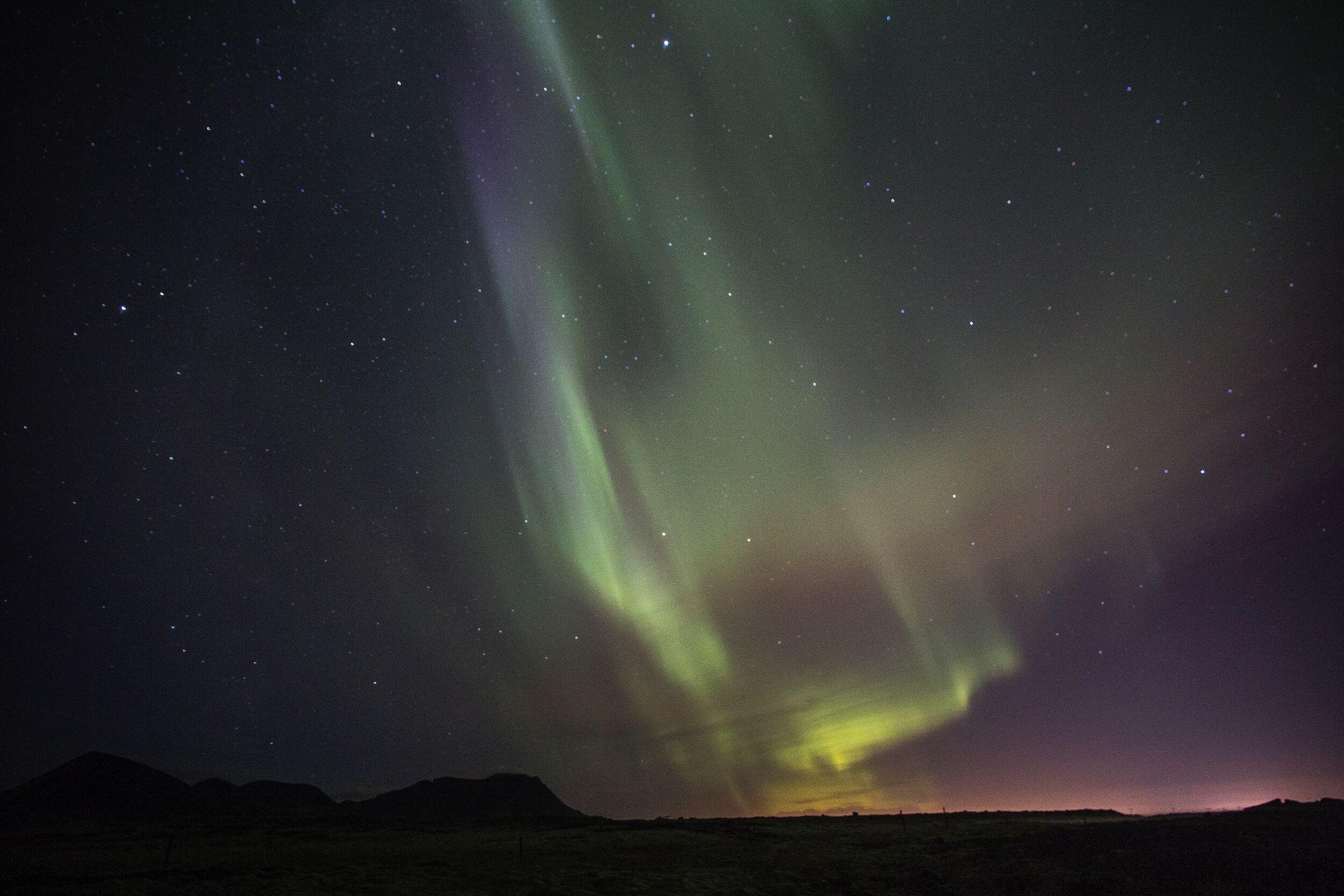
The Golden Circle & Northern Lights - Combo Deal
Want to see the sites of the Golden Circle and hunt for the northern lights but have a limited amount of time? Consider this express Golden Circle/Northern Lights tour! Experience the landmarks of the classic Golden Circle in South Iceland on this unforgettable day tour. The Golden Circle encompasses the must-see sights of Thingvellir National Park, the golden Gullfoss waterfall, and the bubbling geothermal region of Geysir. After your return to Reykjavík, a guide will lead you on a search for the elusive northern lights!
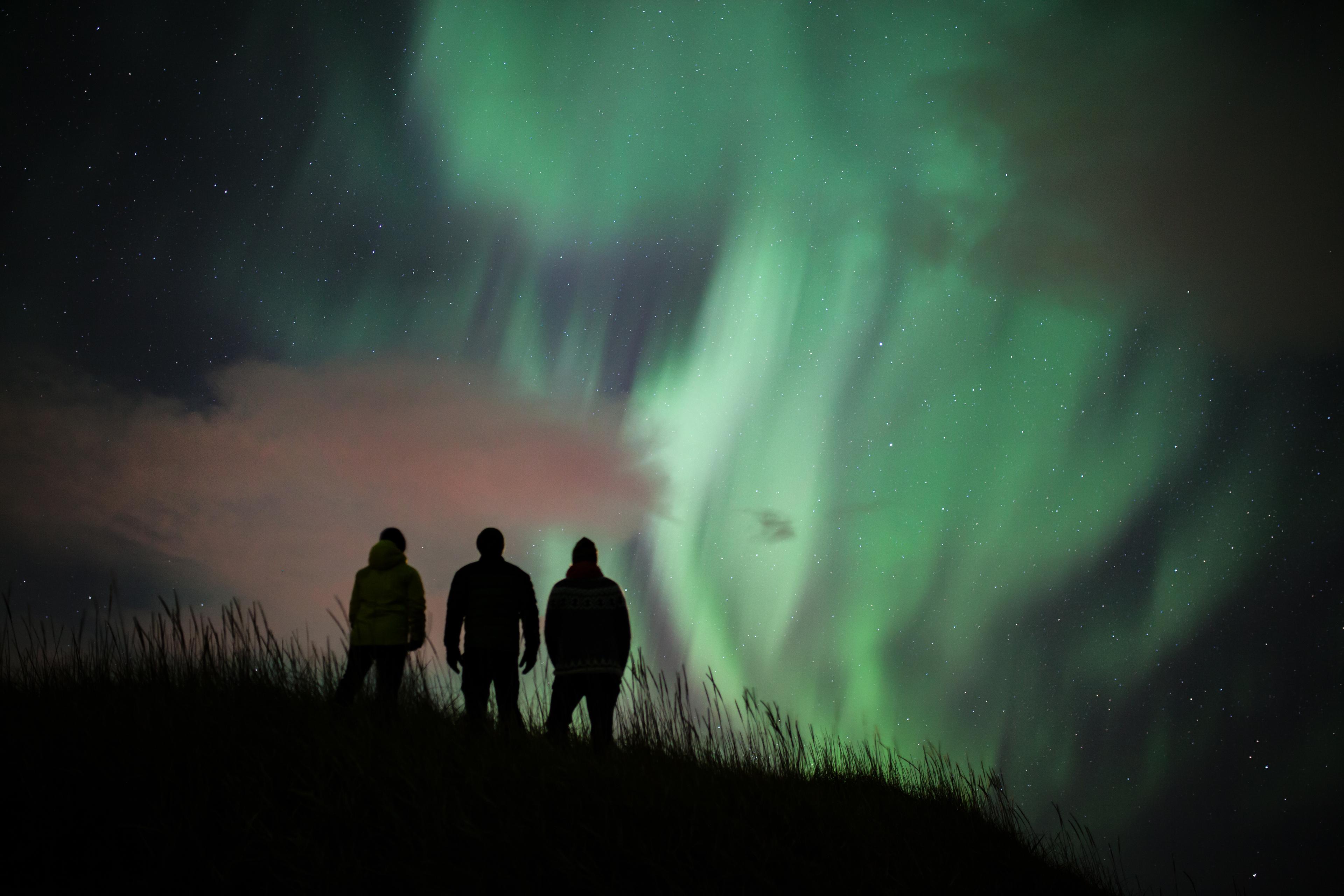
Northern Lights - Small Group Tour
Catch the stunning Northern Lights in the sky, and if they're shy, rebook for free until they show. Included admission to the Aurora Centre's Northern Lights Exhibition on the tour date. The small group size ensures an intimate experience and personalized attention from your expert guide.
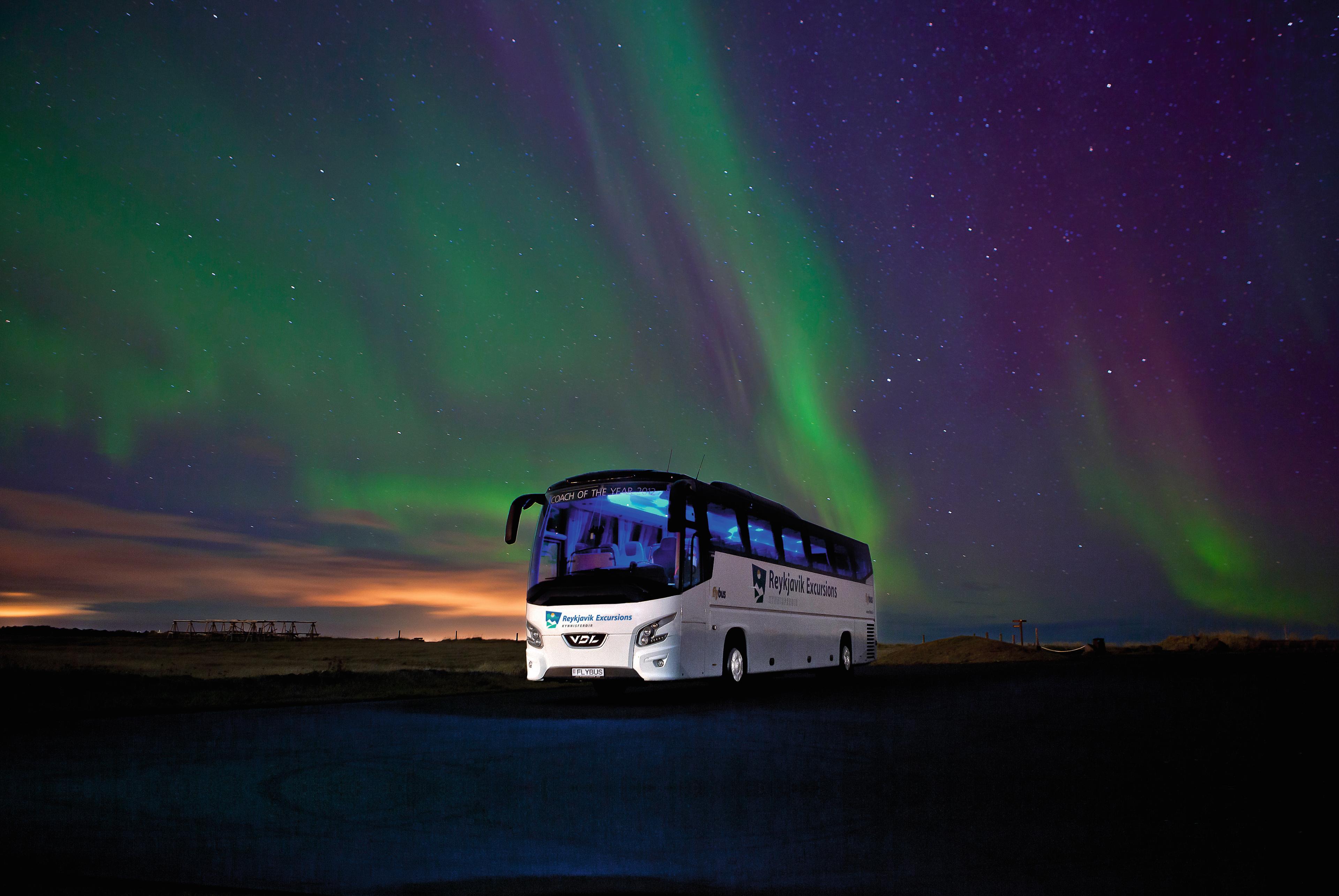
Northern Lights Tour
See the majestic Northern Lights dancing across the sky. If the skies are shy, try again free of charge as many times as you need until you see them! Learn about the phenomenon by visiting the Aurora Centre - Northern Lights Exhibition in Reykjavík; admission is included in this tour!
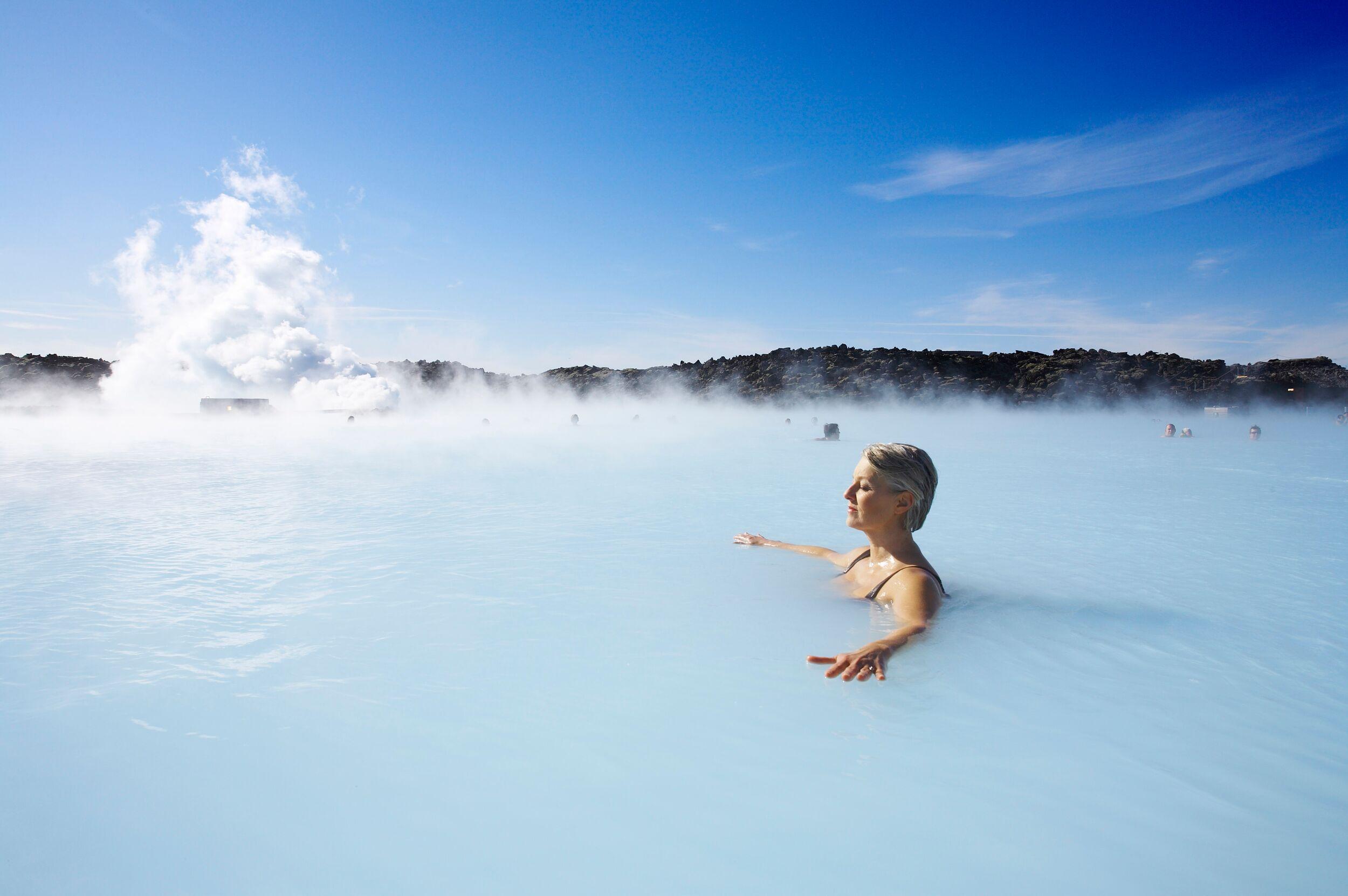
- Best seller
- Popular
Blue Lagoon & Northern Lights
Enjoy a perfect winter day in Iceland! Experience the best of Iceland with this package of two of the island’s most popular tours in one day! Soak in the milky blue healing water of the Blue Lagoon, which is one of Iceland's most famous tourist attractions and is considered by many to be a once-in-a-lifetime experience and an unmissable part of a visit to Iceland. After your return to Reykjavík, a guide will lead you on a search for the elusive northern lights! Watching the lights dance and flicker in the sky, changing shape and colour, is incredible. Prepare to be dazzled!
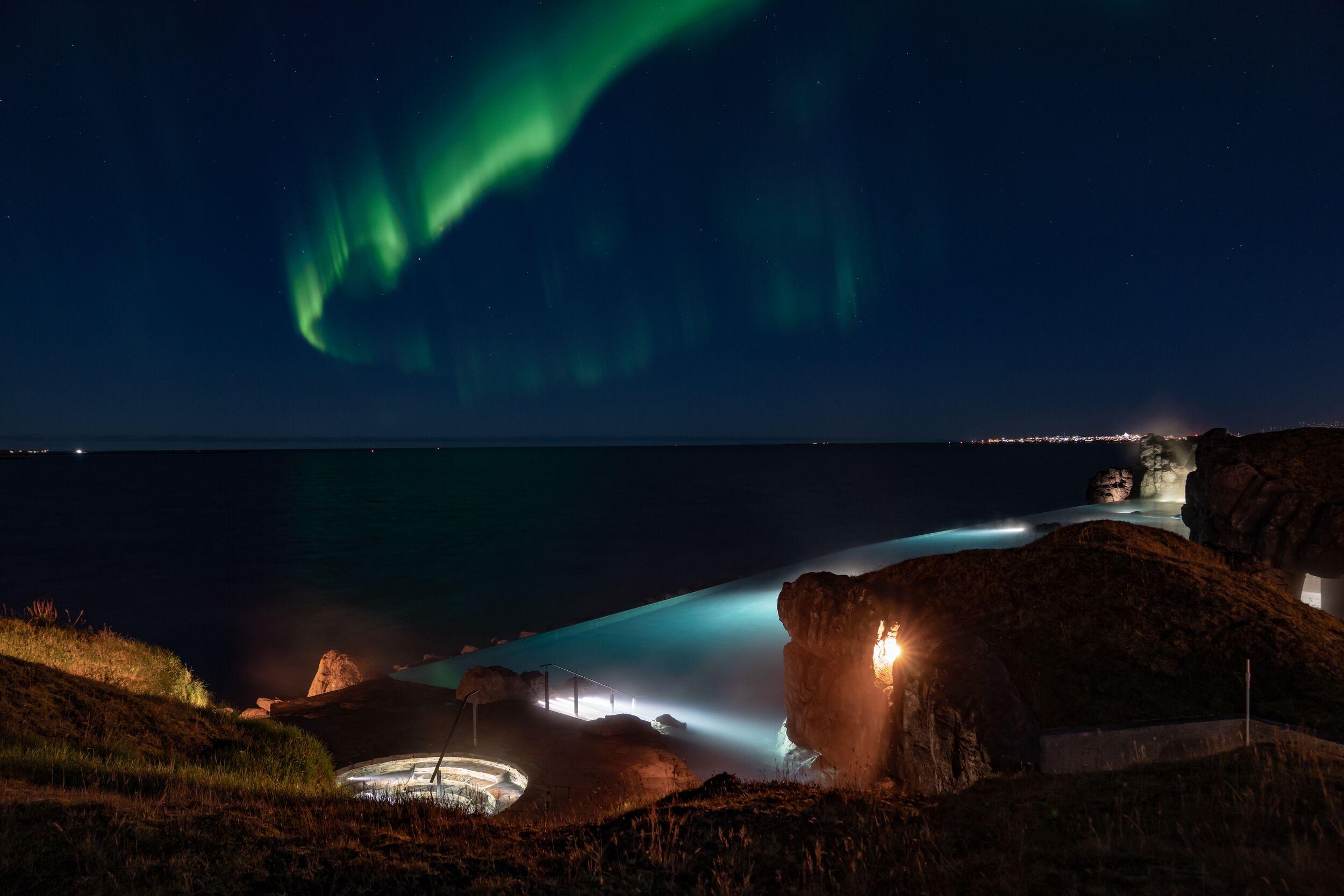
The Sky Lagoon & Northern Lights
Enjoy a relaxing soak in the Sky Lagoon before your adventurous Northern Lights hunt.
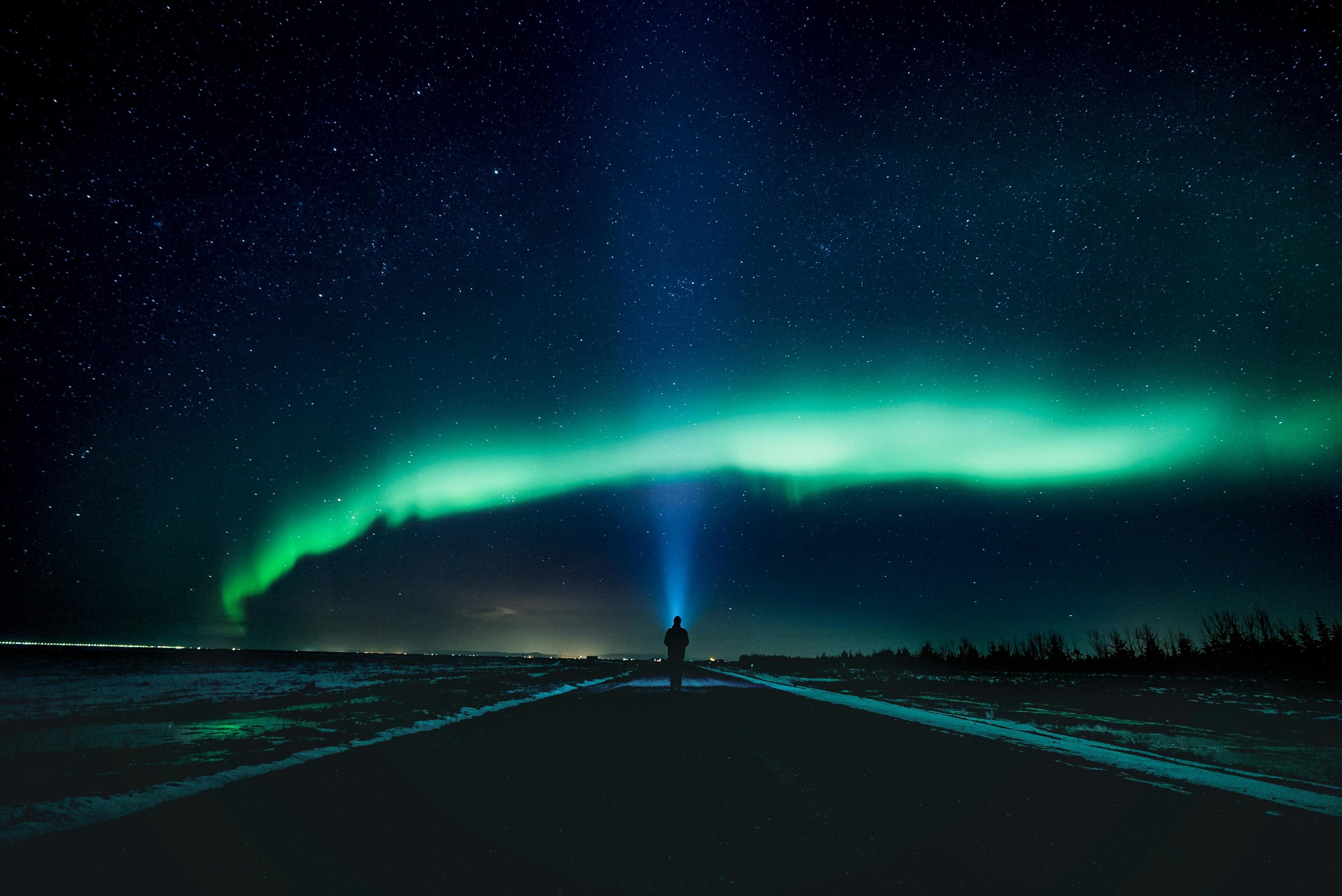
Northern Lights Explorer – Super Jeep Tour
Embark on an unforgettable Northern Lights adventure from Reykjavík in a specially modified Super jeep designed to explore off-the-beaten-path locations. Escape the crowds and experience the breathtaking Aurora in the remote Icelandic wilderness.



